Protected Under
Antiquity Act 1975, The Sindh Cultural Heritage (Preservation) Act 1994
24°51'52.8"N 67°16'19.3"E
![]()
On the UNESCO World Heritage Site Tentative List
Antiquity Act 1975, The Sindh Cultural Heritage (Preservation) Act 1994
The Chaukhandi Tombs feature intricate carvings that distinguish male and female graves, with warriors depicted alongside weapons and women adorned with jewelry motifs.
The Best Time to Visit Sindh Province is Winters. Preferably from September to April Peak Summers (May to August) can get extremely hot with temperatures reaching higher than 40 °C . Hence Summers are not recommended.

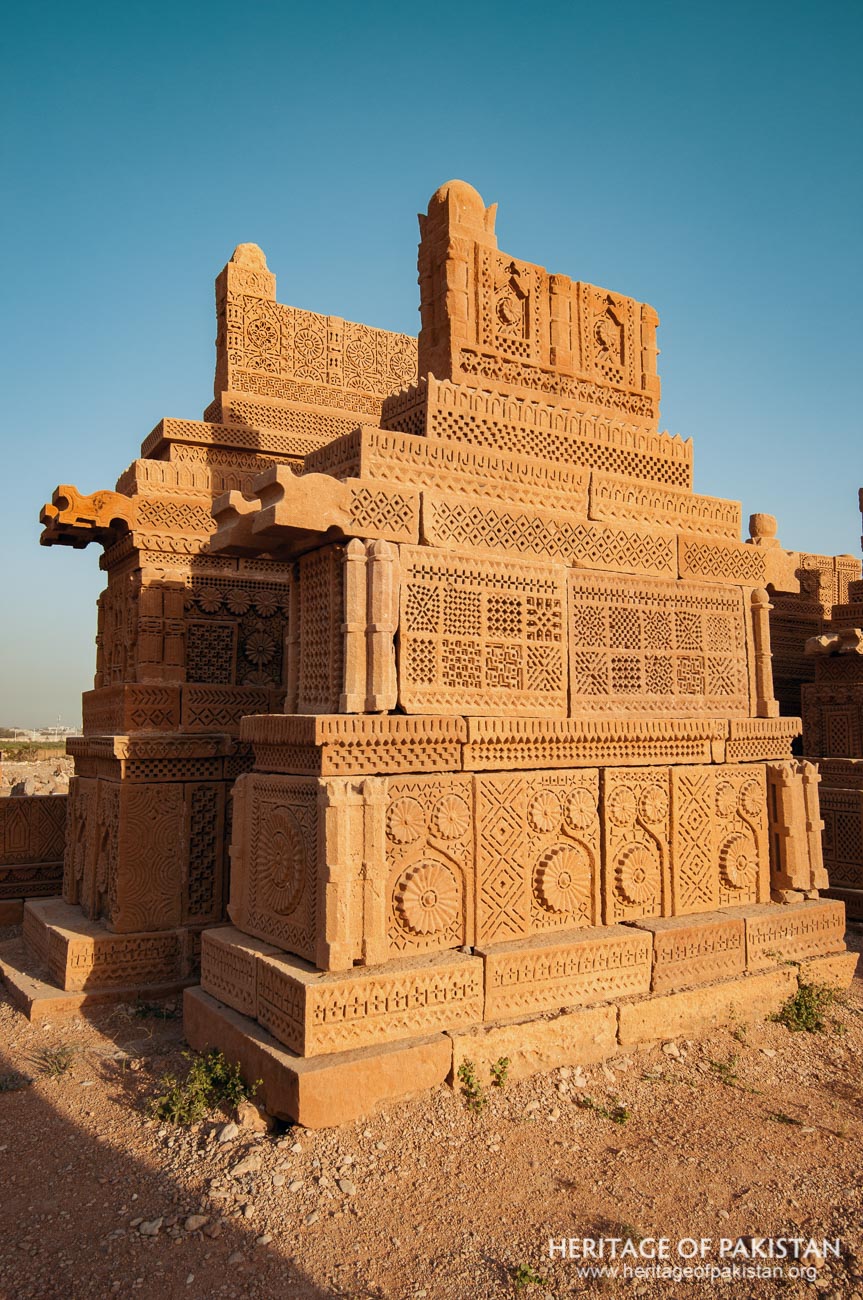
The Chaukhandi Tombs graveyard is located near Karachi in Sindh, Pakistan. It is a significant funerary site known for their unique and intricately carved yellow sandstone tombs. Dating back to the 16th century and afterwards, these tombs exhibit a unique architectural style exclusive to Sindh and Balochistan, characterized by elaborate stone carvings that integrate regional, Islamic, and pre-Islamic motifs. This distinctive architectural style is not found in any other Islamic countries.
The Chaukhandi Tombs are situated near Landhi, to the left of the National Highway linking Karachi and Thatta. This style of tomb construction, often referred to as 'Chaukhandi style,' can also be observed in parts of Sindh and Balochistan. Estimates suggest that there are approximately 200 to 300 such graveyards across these regions. The tombs typically feature a pyramidal form with a broad base that narrows through stepped levels, culminating in an intricate top. The sarcophagi are adorned with some of the region's finest stone carvings, closely resembling those at the Makli Necropolis in Thatta. The carvings include complex geometric patterns, human and figural depictions, and regionally significant symbols.
A notable feature of these tombs is the differentiation in carvings based on gender. Male graves are often embellished with images of horsemen wielding shields, swords, bows, and arrows, while female graves display depictions of jewelry, such as bracelets, necklaces, rings, and anklets.

Intricately carved Tombs of Chaukhandi, Karachi, Sindh
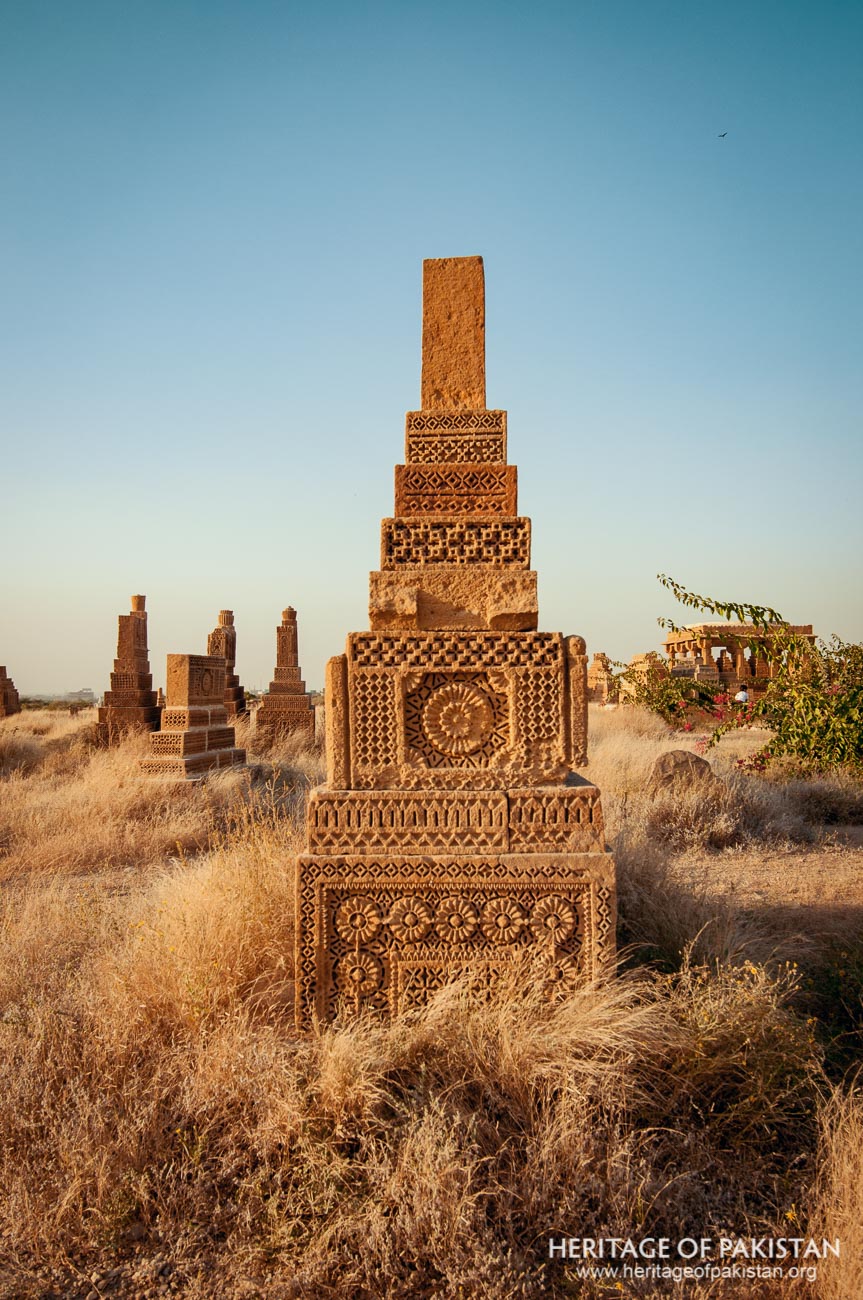
Pyramidal structure of the Chaukhandi tombs
The discovery of the Chaukhandi Tombs is credited to British officers during the British Raj when they conducted an archaeological survey of Western India. J.P. Vogel was the first scholar to document these graveyards, studying them alongside burial sites in Hinidan and the Manghopir oasis.
Scholars use various terms to describe these tombstones in Sindh and Balochistan, including 'chaukhandi,' 'rumi' or 'shami,' and 'ghariyoon' (the chiselled ones). The term 'Chaukhandi Tombs' generally refers to tombs constructed in a tiered, pyramidal structure; however, its precise meaning remains debated. Some scholars associate the term with the location of Chaukhandi graveyard near Karachi, where members of the Jokhia tribe are buried. Others interpret it as an architectural reference to a four-pillared pavilion or an open-roofed enclosure as 'chau' means 'four'. In Sindhi tradition, a 'chaukhandi' refers to a sacred four-walled structure built around a revered person's grave. Another interpretation links the term to canopy-like structures (chattris) within the cemetery. Some of these chattris can be found at the Chaukandi graveyard at Karachi.
These tombs are primarily associated with Baloch warriors and their families especially Jokhio tribesmen who settled in the region between the 16th and 18th centuries. The graves are adorned with elaborately chiselled stone slabs featuring human, figural, and conventional motifs. It is widely believed that these tombs belong to the Jokhio tribe.
Recognized for their historical and artistic significance, the Chaukhandi Tombs are listed on UNESCO’s Tentative List of World Heritage Sites. Initially protected under The Antiquities Act of 1975, the administrative control of the site was transferred to the Sindh government following the 18th Amendment. Presently, the site remains under the jurisdiction of the Sindh Government, which has also proposed the development of an archaeological park at the location to ensure its preservation and promote its cultural heritage.
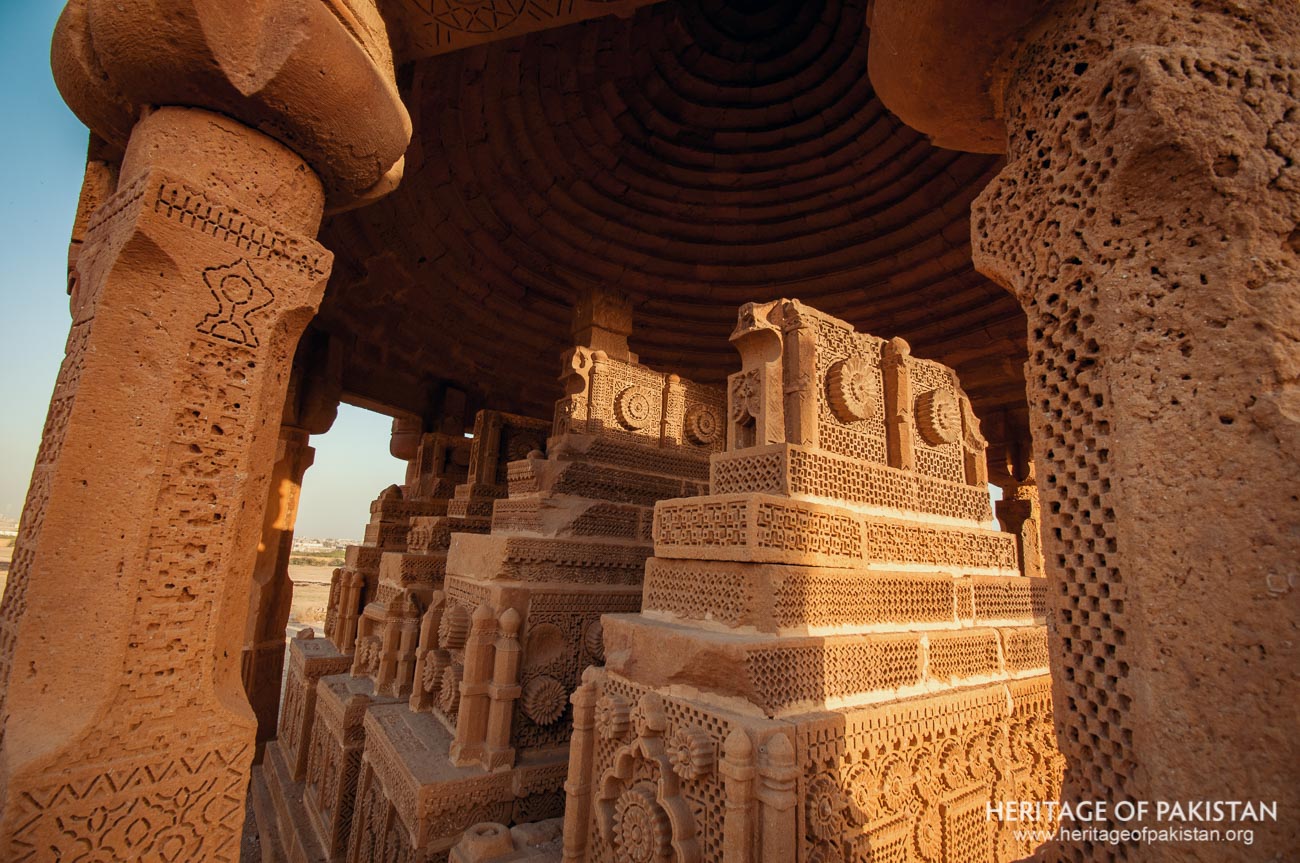
Chaukhandi tombs under the canopy
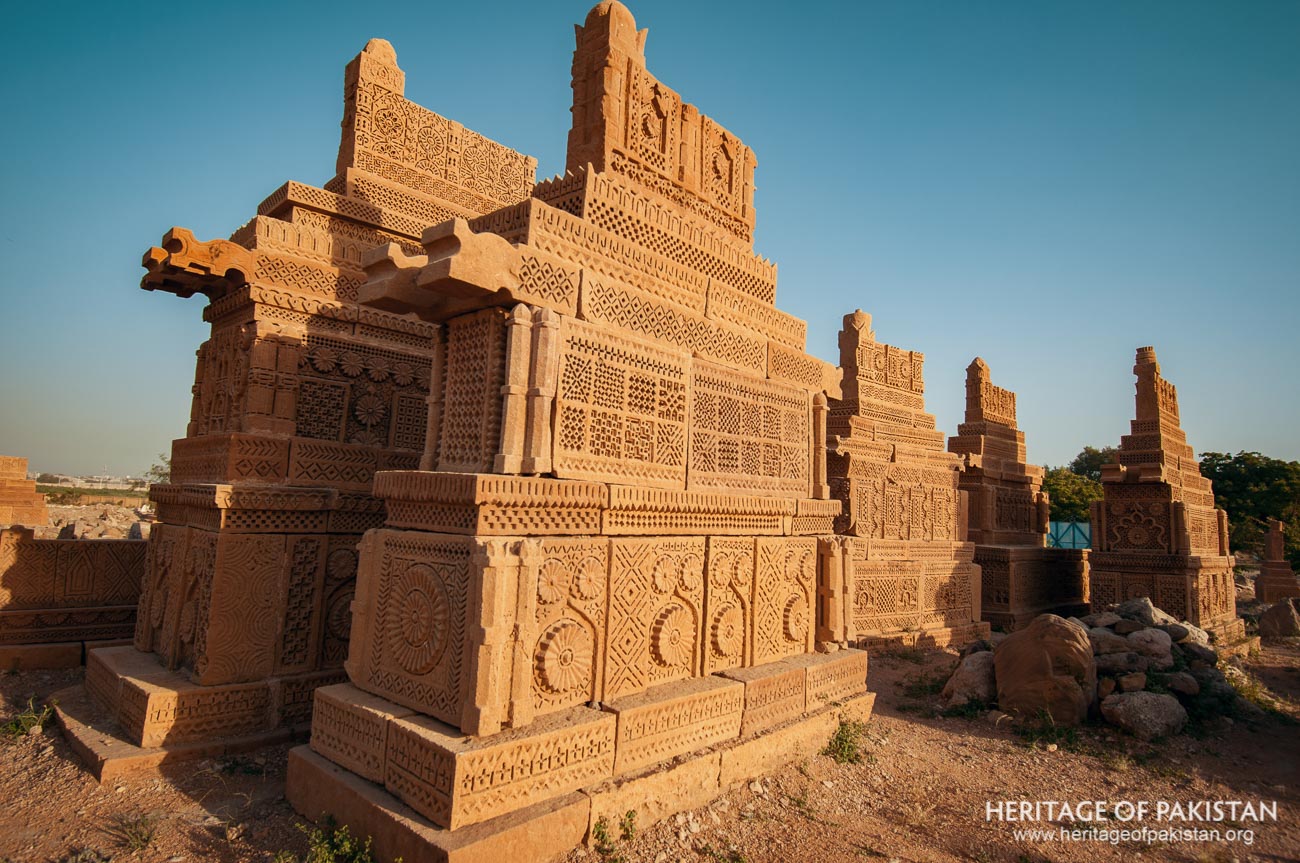
The Chaukhandi graveyard and tombs extend over an area of approximately two square miles. These tombs are predominantly constructed from yellow sandstone and exhibit a distinct pyramidal shape, characterized by a broad base that progressively narrows at the top through stepped levels. The surfaces of these tombs are elaborately adorned with intricate carvings that incorporate both geometric and floral motifs.
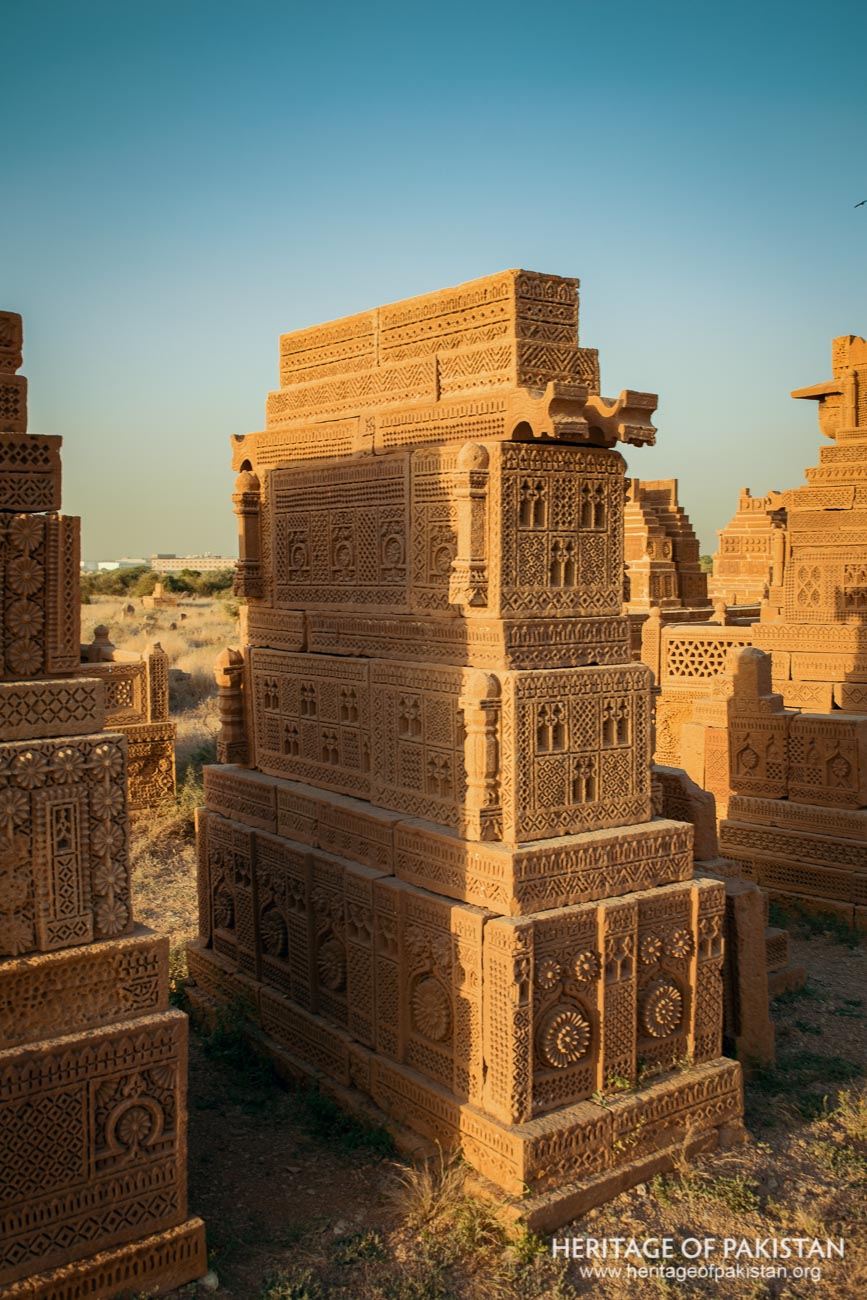
Stone carvings on the Chaukhandi Tombs, Sindh
The iconography of the Chaukhandi tombs varies significantly. Male tombs are typically decorated with carvings of riders and weaponry, while female tombs prominently feature representations of jewelry. Additionally, the carvings include depictions of animals and birds, such as snakes, peacocks, buffaloes, camels, and roosters. Other elements include geometric and floral designs, as well as calligraphic inscriptions and epigraphy. The motifs on these tombs can be categorized into five distinct groups: floral and foliated designs, animal and human representations, geometric patterns, non-geometric forms, and lifeless objects from nature.
The graves of women in Chaukhandi tombs are adorned with detailed representations of their ornaments, carved in relief on both the head and leg sections of the tombs. The head section typically includes depictions of necklaces, bracelets, earrings, finger rings, and armlets. In some instances, a hansli or meena necklace replaces the standard necklace design. Anklets are generally depicted on the leg side. Notably, the appearance of jewelry depictions on women's tombs becomes prevalent from the last third of the seventeenth century onward.
A number of tombs at Chaukhandi bear inscriptions indicating the names of the deceased, with some inscriptions also documenting genealogical details. These inscriptions provide valuable insights into the tribal affiliations of those interred at the site. For example, several graves within the main Chaukhandi complex bear the name Jokhia, confirming the presence of this tribe in the region. The differentiation between male and female graves is further emphasized through distinct carvings. Male graves often depict a horseman equipped with arms, including a shield, sword, bow, and arrow, while female graves display ornamentation such as bracelets, necklaces, rings, and anklets.
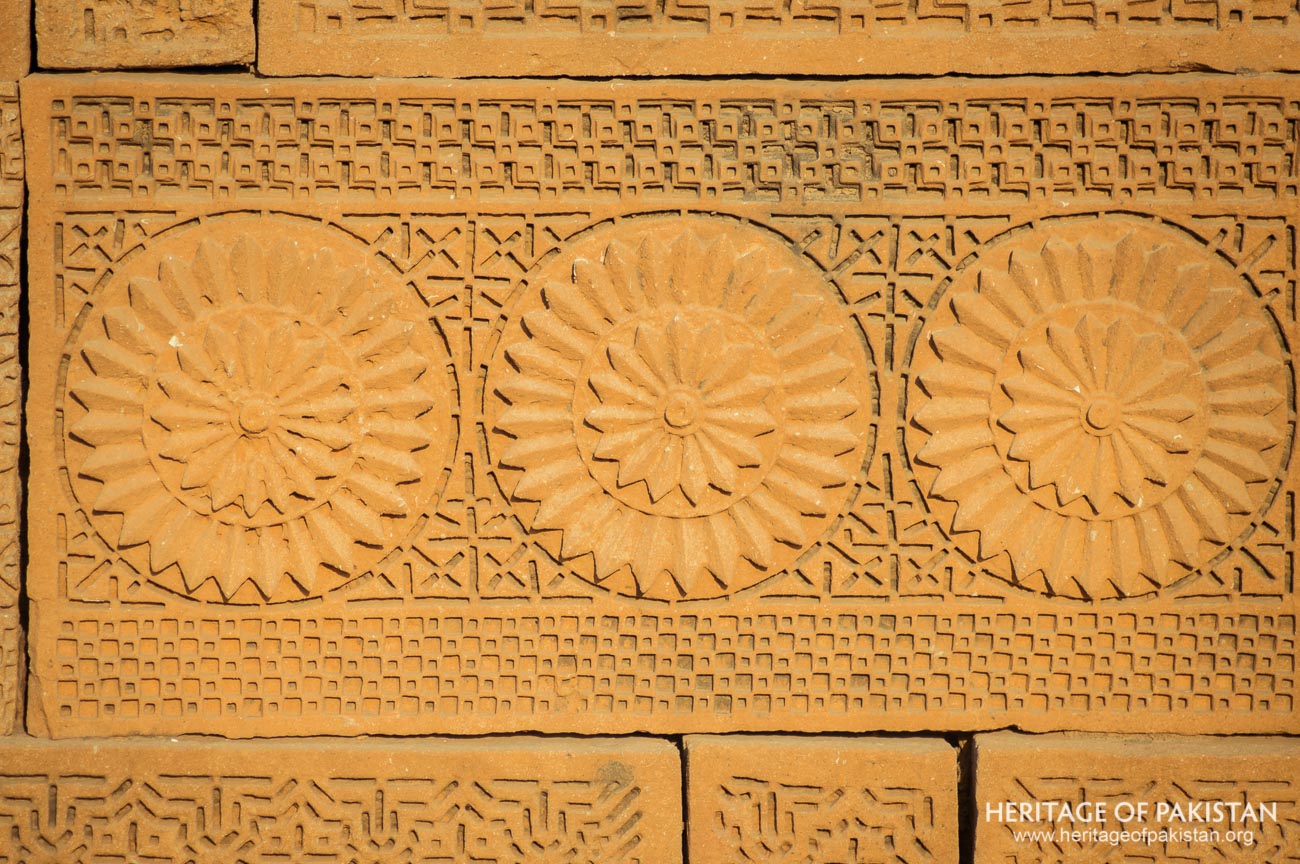
An architectural feature found within the Chaukhandi tombs is the umbrella-shaped canopy (chhattri), constructed over various groups of tombs. This canopy is supported by twelve pillars with square bases and rectangular slabs, resting on a raised square platform measuring 30 feet and 11 inches. Small capped pillars are positioned at the platform’s corners. The exterior of the platform is divided into three decorative sections, each featuring chain, leaf, and geometric patterns. The dome, comprising 23 overlapping stone rings, is adorned with arched panels, chevron motifs, and a lime-plastered exterior. Beneath this canopy, eight graves are arranged in two rows, including that of Murid bin Haji, a Jokhia chief who lived during the reign of Shah Jahan. Additionally, a square canopy is also present within the site.
With its unique stone carvings and design, Chaukhandi tombs remain one of the most culturally important heritage sites in Sindh.
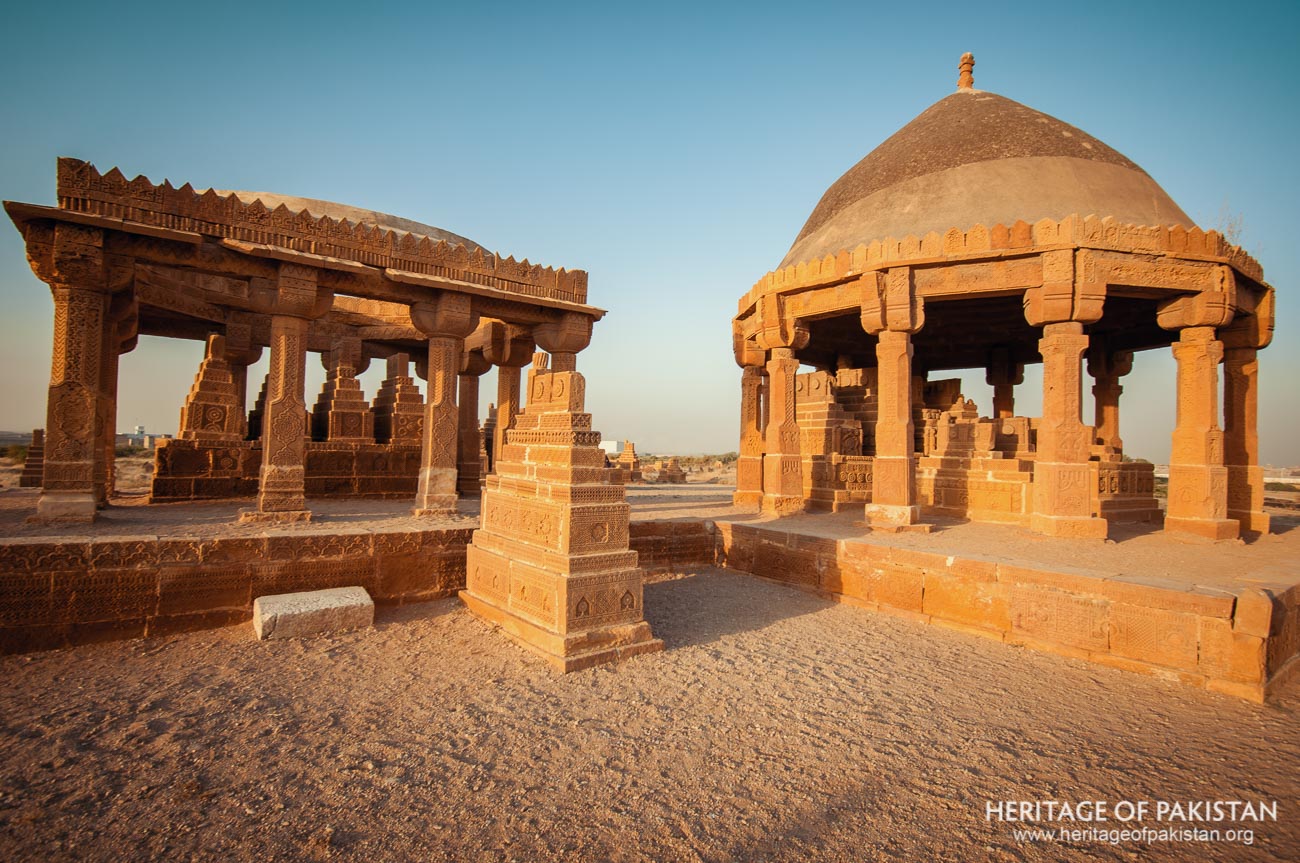

Discover the Chaukhandi Tombs image gallery and immerse yourself in photographs

All Photographs by Syed Noor Hussain and Sania Azhar.
All Rights Reserved. Photos may be used for Non-Commercial, Educational, Artistic, Research, Non-Profit & Academic purposes.
Commercial uses require licensing agreement.


Add a review